Objects : 132
-
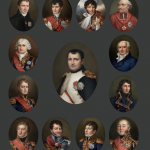 Object / Directoire-Consulat-Ier Empire/Directory-Consulate-1st EmpireSet of thirteen miniatures depicting part of the imperial family and important dignitaries of the First Empire.In the 19th century, the majority of famous artists were men. This was particularly true of miniature painters. The names of Isabey and Augustin are familiar to us. However, some women had genuine artistic careers, and Sophie Liénard (1801-1875) was undoubtedly one of them.
Object / Directoire-Consulat-Ier Empire/Directory-Consulate-1st EmpireSet of thirteen miniatures depicting part of the imperial family and important dignitaries of the First Empire.In the 19th century, the majority of famous artists were men. This was particularly true of miniature painters. The names of Isabey and Augustin are familiar to us. However, some women had genuine artistic careers, and Sophie Liénard (1801-1875) was undoubtedly one of them. -
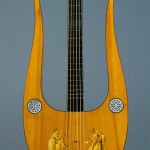 Object / Directoire-Consulat-Ier Empire/Directory-Consulate-1st EmpireA lyre-guitar (Pleyel, 1809)
Object / Directoire-Consulat-Ier Empire/Directory-Consulate-1st EmpireA lyre-guitar (Pleyel, 1809)In 1801, a German correspondent for the Allgemeine Musikalische Zeitung [General Musical Newspaper] reporting from Paris wrote about a new instrument that had “suddenly become so popular in France”(“Paris has hardly ever hunted for the newest with greater zeal […] than it now chases after the oldest (from the times of Greek and Roman art, […]
-
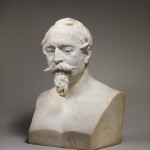 ObjectPosthumous Bust of Napoleon III, 1873-1874, by Jean-Baptiste CarpeauxAfter the fall of the Empire in 1870, the Emperor Napoleon III, in exile in Chislehurst (UK) was in poor health. The sculptor Jean-Baptiste Carpeaux (1827-1875) was summoned in 1872 to create the first sketches for an imperial bust. In the end, Carpeaux arrived after…
ObjectPosthumous Bust of Napoleon III, 1873-1874, by Jean-Baptiste CarpeauxAfter the fall of the Empire in 1870, the Emperor Napoleon III, in exile in Chislehurst (UK) was in poor health. The sculptor Jean-Baptiste Carpeaux (1827-1875) was summoned in 1872 to create the first sketches for an imperial bust. In the end, Carpeaux arrived after… -
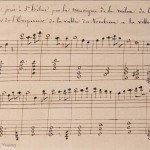 Object / VariaScore for the Funeral March played by the St-Helena Local Militia band while the body of the Emperor was carried from the tomb to the townManuscript bearing the inscription in French: “Marche funèbre jouée à Sainte-Hélène par la musique de la milice de l’ile [illegible] la translation du corps de l’Empereur de la Vallée du tombeau à la ville”. This hand-written score of an arrangement of O come, all ye faithful,…
Object / VariaScore for the Funeral March played by the St-Helena Local Militia band while the body of the Emperor was carried from the tomb to the townManuscript bearing the inscription in French: “Marche funèbre jouée à Sainte-Hélène par la musique de la milice de l’ile [illegible] la translation du corps de l’Empereur de la Vallée du tombeau à la ville”. This hand-written score of an arrangement of O come, all ye faithful,… -
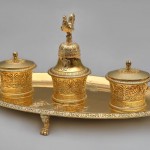 Object / Directoire-Consulat-Ier Empire/Directory-Consulate-1st EmpireA ceremonial inkstand for Napoleon’s “Grand Cabinet” at the Palais des Tuileries
Object / Directoire-Consulat-Ier Empire/Directory-Consulate-1st EmpireA ceremonial inkstand for Napoleon’s “Grand Cabinet” at the Palais des TuileriesThis luxurious inkstand (GMLC-624-000) (which before 2021 had never been publicly exhibited) was made for the Grand Cabinet (formal office) of Napoleon I at the Palais des Tuileries by Martin Guillaume Biennais (1764-1843) and delivered there in December 1813. At the same time, the Emperor’s goldsmith supplied an identical copy for the palace of Fontainebleau(exhibited at the exhibition […]
-
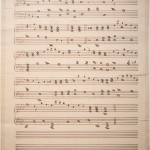 Object / Directoire-Consulat-Ier Empire/Directory-Consulate-1st Empire“Dirge composed expressly for the Funeral of the Emperor Napoleon by Ch. McCarthy of the late St Helena Band, May 1821” – piano reductionIn a note in A St Helena Who’s Who (1919), Arnold Chaplin, a renowned specialist on the St Helena episode, recorded that a musical lieutenant of the 66th Regiment, Charles McCarthy, had composed a “dirge” for the Emperor’s funeral. Chaplin also reported that a score…
Object / Directoire-Consulat-Ier Empire/Directory-Consulate-1st Empire“Dirge composed expressly for the Funeral of the Emperor Napoleon by Ch. McCarthy of the late St Helena Band, May 1821” – piano reductionIn a note in A St Helena Who’s Who (1919), Arnold Chaplin, a renowned specialist on the St Helena episode, recorded that a musical lieutenant of the 66th Regiment, Charles McCarthy, had composed a “dirge” for the Emperor’s funeral. Chaplin also reported that a score… -
 ObjectThe Great French Imperial Coat of Arms, door hanging for the Emperor’s “grand cabinet” at the Palais des TuileriesThe “grand cabinet” of his “grand appartement de représentation” [great reception apartment] was, in Napoleon’s eyes, the most important room in the Tuileries Palace. It was here that he held the Council of Ministers and received the oaths of the dignitaries and great officers of…
ObjectThe Great French Imperial Coat of Arms, door hanging for the Emperor’s “grand cabinet” at the Palais des TuileriesThe “grand cabinet” of his “grand appartement de représentation” [great reception apartment] was, in Napoleon’s eyes, the most important room in the Tuileries Palace. It was here that he held the Council of Ministers and received the oaths of the dignitaries and great officers of… -
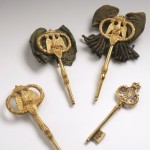 Object / Directoire-Consulat-Ier Empire/Directory-Consulate-1st EmpireA set of Chambellan KeysThe “Maison de l’Empereur” or “Emperor’s Household” was created after the proclamation of the Empire and was largely inspired by the “Maison du Roi” or King’s Household during the Ancien Régime. This institution went back a long time: sovereigns had always had an officer at…
Object / Directoire-Consulat-Ier Empire/Directory-Consulate-1st EmpireA set of Chambellan KeysThe “Maison de l’Empereur” or “Emperor’s Household” was created after the proclamation of the Empire and was largely inspired by the “Maison du Roi” or King’s Household during the Ancien Régime. This institution went back a long time: sovereigns had always had an officer at… -
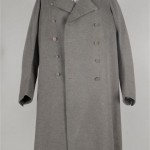 Object / Directory / 1st EmpireNapoleon’s Grey Greatcoat (redingote)The figure of Napoleon is inseparable from his famous bicorn, accompanied by his no less famous grey “redingote” (a large frockcoat commonly known as his “greatcoat”). They made him more easily recognisable in the midst of his his caparisoned staff, decked with trimmings and golden braids.…
Object / Directory / 1st EmpireNapoleon’s Grey Greatcoat (redingote)The figure of Napoleon is inseparable from his famous bicorn, accompanied by his no less famous grey “redingote” (a large frockcoat commonly known as his “greatcoat”). They made him more easily recognisable in the midst of his his caparisoned staff, decked with trimmings and golden braids.… -
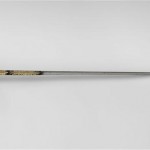 Object / Directoire-Consulat-Ier Empire/Directory-Consulate-1st EmpireNapoleon I’s Coronation SwordWhen Bonaparte became First Consul, head of state, he wanted a ceremonial weapon for grand state occasions, based on the example of the very lavish sword made in 1784 for Louis XVI. He specified that it should “be in keeping with the customs related to…
Object / Directoire-Consulat-Ier Empire/Directory-Consulate-1st EmpireNapoleon I’s Coronation SwordWhen Bonaparte became First Consul, head of state, he wanted a ceremonial weapon for grand state occasions, based on the example of the very lavish sword made in 1784 for Louis XVI. He specified that it should “be in keeping with the customs related to…

